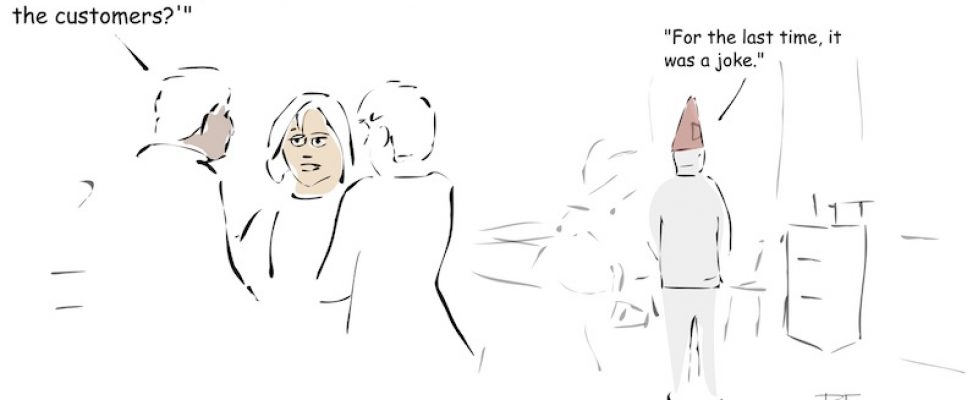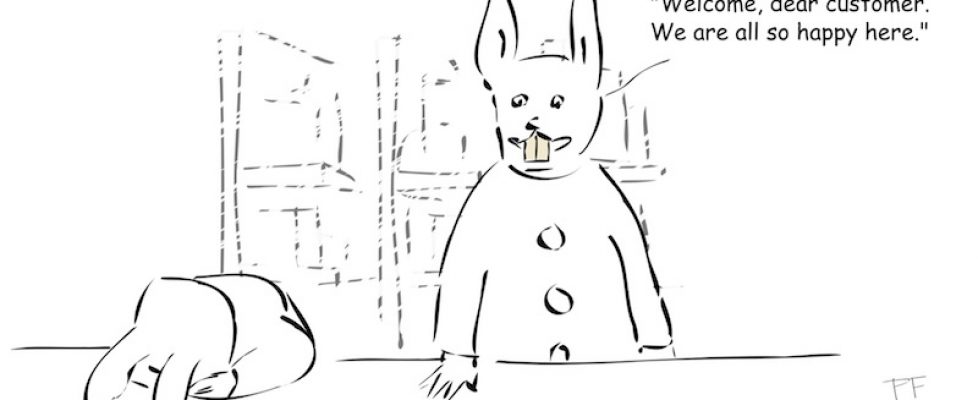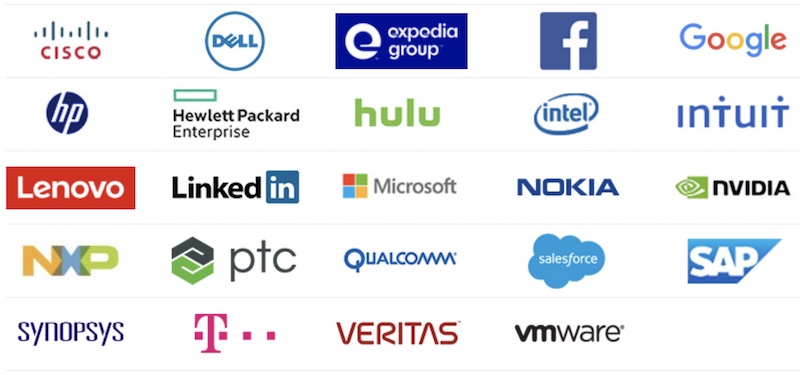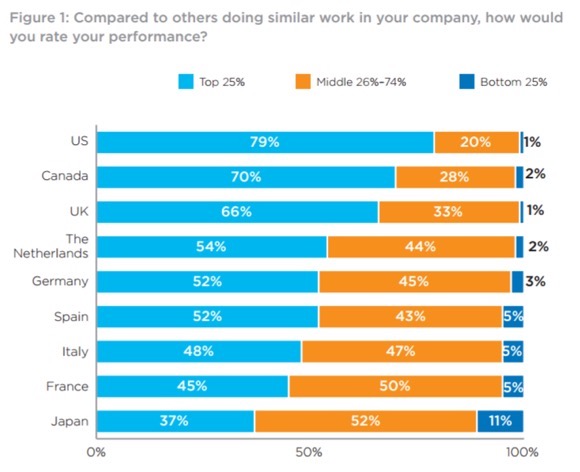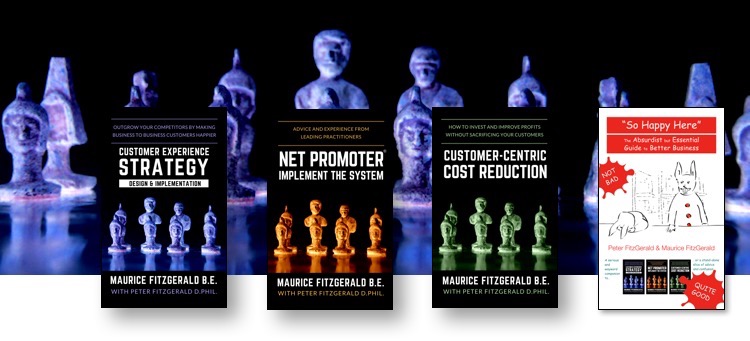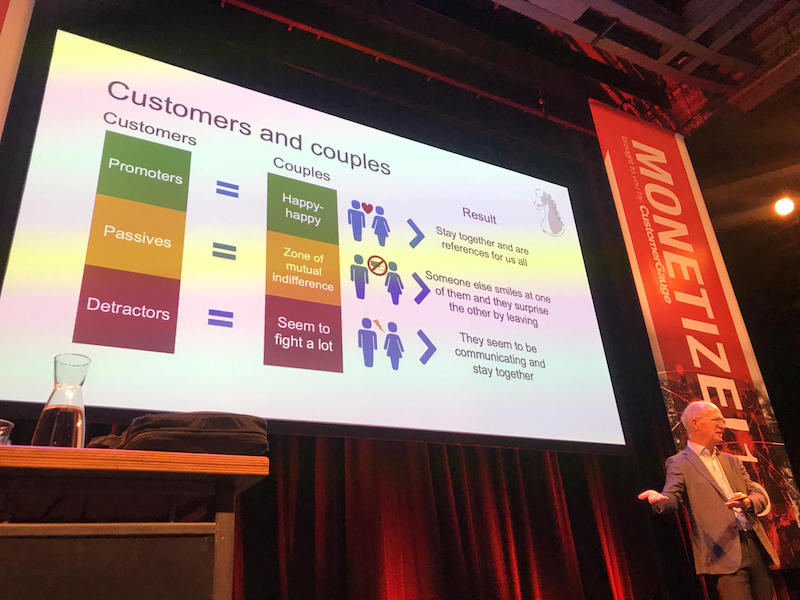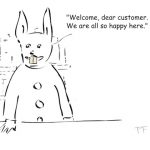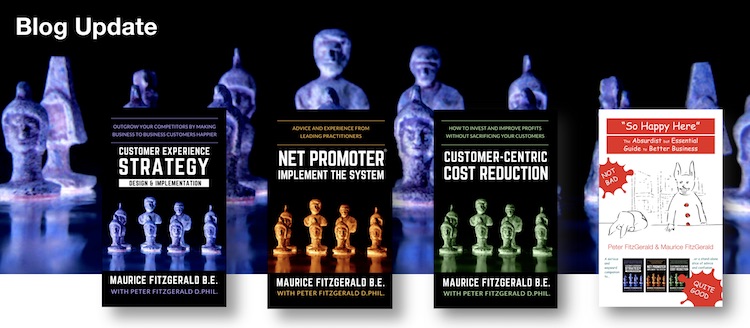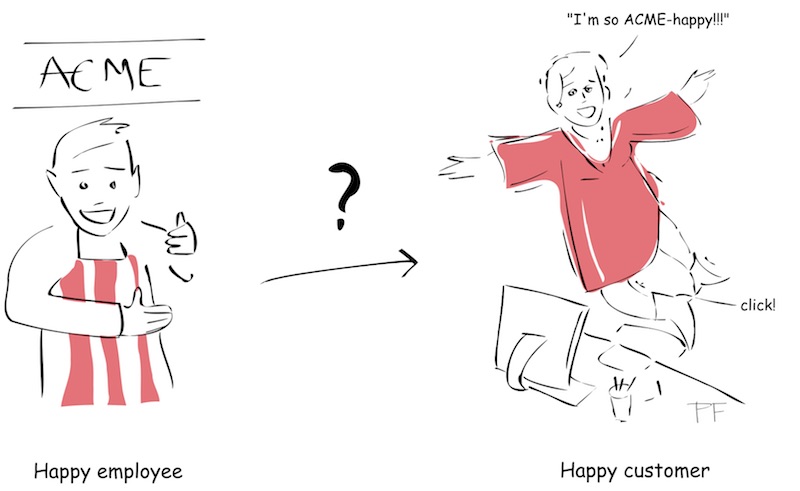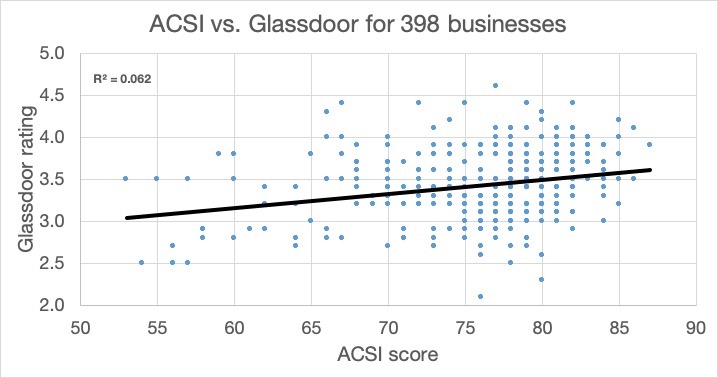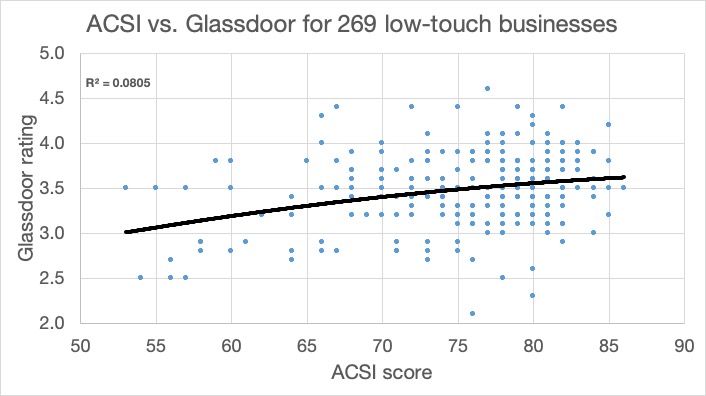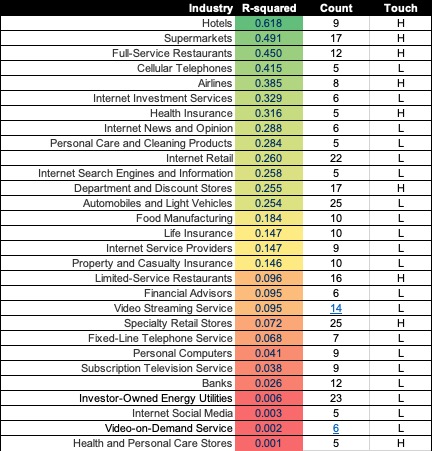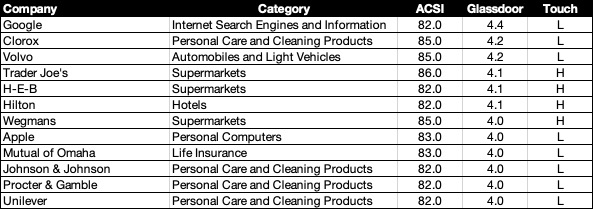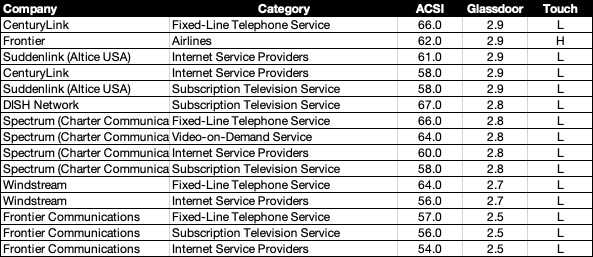NPS (35) – Sustained Leadership Commitment – Do you have it? – 35th article in a series on the Net Promoter System®
Welcome to the 35th article in my series on the Net Promoter Score and System.
You can read all of the prior articles in the NPS series on our blog page here.
The questions addressed here are about the true level of commitment of your leadership to improving customer loyalty and the associated mid-term financial performance. We will cover how to tell whether you have the commitment already, and what you should do if not.
Are your leaders already committed?
Don’t start by making assumptions. Do your research. If you work for a public company, download and read your annual report. Read your latest earnings announcement. If your company does a quarterly earnings conference call with financial and industry analysts, try to join the call. Download the slides used for the call and inspect them. Assuming your company strategy is stated somewhere in all this material, what is it? Are customers mentioned among the top few priorities? While it could have changed by the time you read this, many consider Apple to be customer-centric, but Apple does not mention customer experience in any of these documents at the time of writing. They are in fact a product-centric company. This does not mean they don’t care about customers at all; far from it. In a product-centric company, work on customer experience simply has to be positioned as supporting product growth.
Prompted versus unprompted support
Reading your CEO and senior leaders’ all-employee emails is close to reading what psychologists call an unprompted response. Unprompted reactions to questions tell you what a person really feels. The prompted reactions of a senior executive bring political correctness into play. Think about what would happen were you to ask these questions in the Q&A section, after your CEO has spoken to all employees. Accept for a moment that all three start with “You have told us your top five priorities, but you have not mentioned…”
- “…that only 15% of the people managers in the company are women while we represent 40% of the workforce. Do you not think this is important?”
- “…that most other companies around here give paid time off for employees to do volunteer work in the community. How much do local communities matter to our company?
- “…our customers as a priority. Where are customers on your list?”
Faced with such prompting, the CEO is forced to reply that he/she is launching a major initiative to double the number of female managers, that we can look forward to an announcement about volunteering, and that customers are central to everything we do, so should not be mentioned separately, or something similar. None of these responses change the reality of the top priorities: the list the CEO gives without prompting. If customer experience is not on your company’s formal priority short list, you can change it over time, with patience and persistence.
Leaders’ job history may work against you
If your company hires leaders from outside, it can pose particularly difficult problems. After all, the executive who has been poached is naturally convinced that he or she has been hired for their beliefs, knowledge and results, as well as the business practices and results of the former employer. If her former company had better results than yours, and did not use the Net Promoter System, it is unlikely that she can easily be persuaded to adopt it. She is more likely to propose that NPS be abandoned in favor of whatever she is used to. This is where your CFO should help, assuming you have jointly proven the financial effect of NPS trends for your company. (This won’t work if the new executive is the CFO, of course.) If the executive’s former company is one of your competitors, NPS should be positioned as a way you are going to catch up and overtake them. That position is hard to argue with, as most executives understand that you can never overtake a competitor by copying exactly what they have been doing.
Do your leaders spend much time with customers?
According to Bain research shown below, the larger the company, the more time leaders spend on internal meetings, rather than directly with customers. They know this and they hate it.
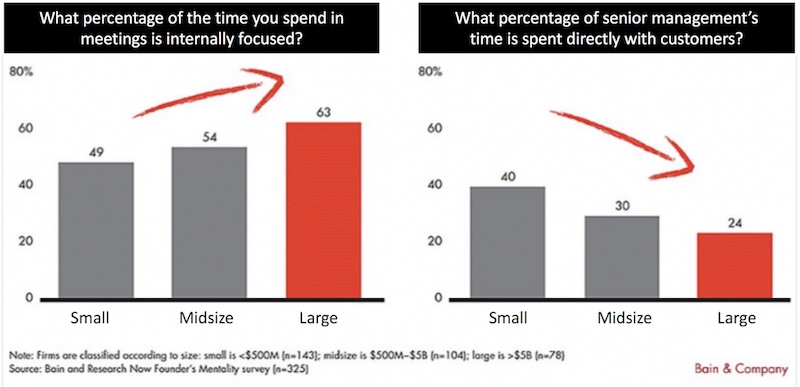
Ask your senior managers how much of their time they spend with customers and how much they would like to spend. If they currently devote more than the proportions below to customers, you can consider them to be committed. All of this has a perverse benefit for the customer experience leader in a large company. If you can come up with simple proposals that let leaders spend more time with customers, and with minimal effort on their part, you will win.
Check your Intranet
Now you know what is being said publicly. Are the public statements about customers backed up by the internal priority list? What has the CEO said in his or her latest email message to all employees? Assuming you have an intranet, go to the home page of each member of the corporate leadership team. Look for their lists of priorities for their teams. Are customers mentioned? If you work for a large company, look one layer down. What do you see? I suggest making a table with all the priority lists and discussing it with your leadership team.
Do the actions match the words?
Now you know what your leaders are saying. Time to inspect what they are doing. Start internally. Does your company hold events for sales teams? Do customers or partners attend and speak at these events? If you have effective monopolies in some product areas, what has been your approach to pricing? Do you put prices up each and every year, as some notorious pharmaceutical companies have been seen to do? If you are in software and perform license audits on customers, is it done by a helpful operations person or an aggressive lawyer? What is your supply chain team’s attitude to their operational metrics like level of fill and delivery to customer commit dates? Is there evidence that both the standard and the performance have been steadily improving over time, or does cost reduction seem to compromise that?
Price gouging — a particularly insidious move
When I first wrote on this subject in 2016, the New York Attorney General had launched an investigation into Mylan Pharmaceuticals, the maker of EpiPens. An EpiPen is used to provide life-saving injections to people in anaphylactic shock, due to allergies. The reason for the investigation is that Mylan have had a monopoly on the product and have increased its price in the USA by 471% since acquiring it in 2007. The CEO’s initial public attitude to this seems to be “Hey… I am just running a business here.”
Daniel Kahneman has written about price fairness and the consequences of unfair pricing in Thinking, Fast and Slow. He gives examples of a hardware store that puts up the prices of snow shovels by a third during a storm, and of an employer putting down the salary of an existing employee due to competition. Very few people consider these practices to be fair. So what? So… he goes on to cover the revenge customers are prepared to take when they see an unfair practice. Indeed, not only will customers take revenge, many other people who are not customers will happily join in to punish the unfair practice and they will all feel great about it. This is what is currently happening with Mylan. Go to their website at www.mylan.com. It purports to show how caring they are. The actions do not seem to match the words.
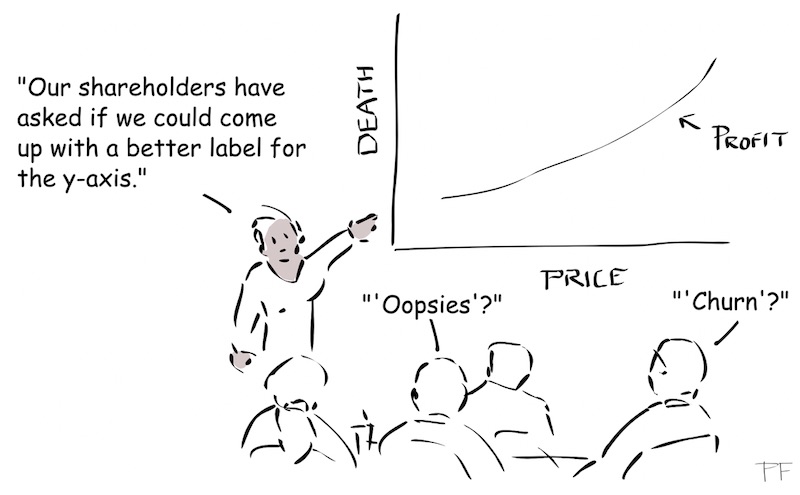
Corporate goals can conflict with each other
In larger companies, each corporate function can have goals that seem perfectly sensible in isolation, but conflict with each other. I remember one of these situations arising when I was in the HP office in the center of Prague. A bank across the road had a guaranteed 30-minute intervention time for their systems. We held spare parts in our building for them. The local team were unpleasantly surprised by the results of the corporate Real Estate team’s cost reduction goals. We had to leave the expensive office downtown and move to a cheaper location, making it impossible to honor the service time guarantee with existing processes.
A similar exercise led to a proposal to close a remote parts stocking location in the east of Russia. The next-closest office was over a thousand miles away. Our response time guarantee to a local oil company was at risk. Unfortunately, we had to find more expensive solutions for servicing the customers while still allowing the Real Estate team to make their goals. If you work at a company that needs to reduce costs, try hard to ensure that each cost goal that could impact a customer is accompanied by an appropriate customer-centric operational metric.
Next time
The next article will be the first in a set of three about securing and sustaining leadership commitment for your work.
As is often the case, the above is a slightly-edited version of a chapter in one of our books; in this case Net Promoter – Implement the System All of our books are available in paperback and Kindle formats from Amazon stores worldwide, and from your better book retailers.

